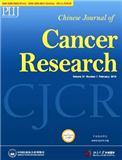
中国癌症研究(英文版)(Chinese Journal of Cancer Research) 知网万方维普
- CSCD
- 科核
- 高T1
- 主管单位:
中国科学技术协会
- 主办单位:
中国抗癌协会
- 国际刊号:
1000-9604;EISSN1993-0631
- 国内刊号:
11-2591/R
- 学科分类:
- 字数:
16000-54000
- 有无基金:
/有基金 100.0%
- 周期:
CN外文-双月刊
- 特殊属性:
第一批认定学术期刊
- 电话:
010-88196612(202102期)
- 邮箱:
editor@cjcrcn.org(202102期)
- 复合因子:
2.264
- 综合因子:
1.65
- 收录:
知网,万方,维普
- 级别:
CSCD,科核,高T1
- 杂志社官网:
- 投稿网址: http://mc03.manuscriptcentral.com/cjcr
期刊简介
《中国癌症研究》期刊已被查看: 次
更新频次
高频栏目:
Review Article-100%-期平均发文量2篇
Original Article-100%-期平均发文量3篇
Perspective-83.3%-期平均发文量1篇
低频栏目:
Special lssue on Cancer Epidemiology, Risk Factors and Screening_Preface-16.7%-期平均发文量1篇
Special lssue on Cancer Epidemiology, Risk Factors and Screening_Review Article-16.7%-期平均发文量4篇
Special lssue on Cancer Epidemiology, Risk Factors and Screening_Original Article-16.7%-期平均发文量1篇
2023年06期其他-16.7%-期平均发文量1篇
Editorial-16.7%-期平均发文量1篇
2023年05期其他-16.7%-期平均发文量1篇
2023年04期其他-16.7%-期平均发文量1篇
NHCPRC Guidelines-16.7%-期平均发文量1篇
CSCO Guidelines-16.7%-期平均发文量1篇
2023年03期其他-16.7%-期平均发文量1篇
2023年02期其他-16.7%-期平均发文量1篇
Guidelines-16.7%-期平均发文量1篇
2023年01期其他-16.7%-期平均发文量1篇
单位占比
其他-100.0%一作占比
/有基金-100.0%投稿指南
1、投稿方式:在线投稿。
2、刊内网址:http://www.cjcrcn.org
投稿系统:
http://mc03.manuscriptcentral.com/cjcr
3、刊内邮箱:editor@cjcrcn.org
4、官网电话:010-88196612
5、出刊日期:双月刊,逢双月出版。
6、官网微信公众号:中国癌症研究英文杂志(chjcacnr)
2021年5月19日星期三
《中国癌症研究(英文)》投稿须知
【官网信息】
Author Instruction
Chinese Journal of Cancer Research (CJCR) is an international, peer-reviewed open access (OA) oncological journal published in English bimonthly, and is owned by Chinese Journal of Cancer Research Co., Ltd and Peking University Cancer Hospital & Institute. It focuses on the aspects of cancer researches mainly including cancer etiology and epidemiology, cellular and molecular biology, biochemistry, immunology, molecular genetics, gene diagnosis and gene therapy, pathology of malignant tumor, research on anti-cancer drugs, imaging diagnosis of cancer, surgical oncology, medical oncology, radiation oncology and biological therapy of cancer, etc.
1. Manuscript Categories
Original Articles
Original scientific reports of clinical research, epidemiological studies, research on molecular biology, etc. Original articles should normally be in the format of Introduction, Materials and Methods, Results and Discussion. The text is limited to 5,000 words excluding the title page, abstract, references, figures, figure legends, and tables. Abstracts are limited to 300 words.
Review Articles
Reviews are comprehensive analyses of specific topics. They are submitted upon invitation by the Editors. Proposals for reviews may be submitted; however, in this case authors should only send an outline of the proposed paper for initial consideration. Both solicited and unsolicited review articles will undergo peer review prior to acceptance. The text is limited to 5,000 words excluding the title page, abstract, references, figures, figure legends, and tables. Abstracts are limited to 300 words.
Research Highlights
Research Highlights are ‘digest’ of the best/most interesting research findings that have been recently published in the field of cancer research. They are usually solicited by editors and written by outstanding experts. The text is limited to 1,500 words. No abstracts are required.
Perspectives
Perspective articles can be more subjective, forward-looking or speculative. A paper presenting controversial positions or papers of the same topic advocating opposite opinions will be published as Perspectives. Most perspective articles will be solicited by the editors. However, we also welcome timely, unsolicited perspective articles. The text is limited to 5,000 words excluding the title page, abstract, references, figures, figure legends, and tables. Abstracts are limited to 300 words.
Technical Notes
Technical notes should present a novel or improved technique, investigation or procedure. The article must describe a demonstrable advance on what is currently available. The text is limited to 2,500 words including abstract, but excluding references, tables and figures. Photos, drawings and videos are encouraged.
Commentaries
Commentaries present a point of view of general interest not related to an article in the same issue of CJCR. The text is limited to 1,500 words. No abstracts are required.
Editorials
Opinions of recognized leaders in cancer research are published are editorials. Editorials are generally solicited by the Editor-in-Chief. Length should not exceed 2,500 words with no more than 15 references.
2. Structure of Manuscript
The length of manuscripts must adhere to the specifications under the section Manuscript Categories. Manuscripts should be presented in the following order: (i) title page, (ii) abstract and key words, (iii) text, (iv) acknowledgments, (v) disclosure, (vi) references, (vii) supplementary materials, (viii) figure legends, (ix) tables (each table complete with title and footnotes) and (x) figures. Footnotes to the text are not allowed and any such material should be incorporated into the text as parenthetical matter.
Title Page
The title page should contain: (i) the title of the manuscript. Authors should include all information in the title that will make electronic retrieval of the article both sensitive and specific; (ii) the full names of the authors; (iii) the addresses of the institutions at which the work was carried out together; and (iv) the full postal and email address, plus facsimile and telephone numbers, of the corresponding author. The present address of any author, if different from that where the work was carried out, should be supplied in a footnote. In keeping with the latest guidelines of the International Committee of Medical Journal Editors, each author’s contribution to the paper is to be quantified. The title should be short, informative and contain the major key words so that readers and in particular online users will discover the article easily in online search. Do not use abbreviations in the title. A short running title (less than 40 characters) should also be provided.
Abstract and Keywords
The length of abstracts must adhere to the word count specifications under the section Manuscript Categories. The abstract should include the following subheadings: Objective, Methods, Results and Conclusions. It must be factual and comprehensive. The use of abbreviations and acronyms should be limited and general statements (e.g. “the significance of the results is discussed”) should be avoided. Three to six key words should be supplied below the abstract, in alphabetical order, and should be taken from those recommended by the US National Library of Medicine’s Medical Subject Headings (MeSH) browser list at: http://www.nlm.nih.gov/mesh/meshhome.html.
Text
Authors must use the following subheadings to divide the sections of their Original Article manuscript: Introduction, Materials and Methods, Results, Discussion, Acknowledgment, Footnote, References, and when relevant, Supplementary Material. However, review, perspective, opinion and commentary articles do not require these specifically outlined sections, and they can be written in several sections with their own headings, as suitable.
Acknowledgements
This should include sources of fund support, including federal and industry support. All authors who have contributed to the manuscript must be acknowledged. Medical writers, proofreaders and editors should not be listed as authors, but acknowledged at the end of the text.
Footnote
At the time of submission, each author must disclose and describe any involvement, financial or otherwise, that might potentially pose a conflict of interest. Disclosure must be included in the text of the manuscript.
References
The Vancouver system of referencing should be used. In the text, references should be cited using superscript Arabic numerals in the order in which they appear. If cited in tables or figure legends, number according to the first identification of the table or figure in the text. In the reference list, cite the names of all authors when there are three or fewer; when four or more, list the first three followed by et al. Do not use ibid. or op cit. Reference to unpublished data and personal communications should not appear in the list but should be cited in the text only (e.g. Smith A, 2000, unpublished data). All citations mentioned in the text, tables or figures must be listed in the reference list. Names of journals should be abbreviated in the style used in PubMed. Authors are responsible for the accuracy of the references.
Please use the following style for references:
Article in a journal:
Chen W, Sun K, Zheng R, et al. Cancer incidence and mortality in China, 2014. Chin J Cancer Res 2018;30:1-12. <DOI: 10.21147/j.issn.1000-9604.2018.01.01> <PMID: 29545714>
Chen WQ, Zheng RS, Zeng HM, et al. Trend analysis and projection of cancer incidence in China between 1989 and 2008. Zhonghua Zhong Liu Za Zhi (in Chinese) 2012;34:517-24. <DOI: 10.3760/cma.j.issn.0253-3766.2012.07.010> <PMID: 22967471>
Woolen SA, Shankar PR, Gagnier JJ, et al. Risk of nephrogenic systemic fibrosis in patients with stage 4 or 5 chronic kidney disease receiving a group II gadolinium-based contrast agent: A systematic review and meta-analysis. JAMA Intern Med 2019. [Epub ahead of print]. <DOI: 10.1001/jamainternmed.2019.5284> <PMID: 31816007>
Chapter in a book:
Hobson AS. Acute lymphoblastic leukemias. In: Stiene-Martin EA, Lotspeich-Steininger CA, Koepke JA, eds. Clinical hematology: principles, procedures, correlations. 2nd ed. Philadelphia: Lippincott, 1998:473-89.
A book:
Fritz A, Percy C, Jack A, et al. International Classification of Diseases for Oncology. 3rd ed. Geneva: World Health Organization, 2000.
Online publication:
Howlader N, Noone AM, Krapcho M, et al. SEER Cancer Statistics Review, 1975-2011, National Cancer Institute. Bethesda, MD. Available online: http://seer.cancer.gov/csr/1975_2011/.
Tables
Tables should be self-contained and complement (but not duplicate) information contained in the text. Number tables consecutively in the text in Arabic numerals. Type tables on a separate page with the legend above. Legends should be concise but comprehensive – the table, legend and footnotes must be understandable without reference to the text. Vertical lines should not be used to separate columns. Column headings should be brief, with units of measurement in parentheses; all abbreviations must be defined in footnotes. Footnote symbols, †, ‡, § or ¶, should be used (in that order) and * , ** or *** should be reserved for P values. Statistical measures such as SD or SEM should be identified in the headings. If tables have been reproduced from another source, a letter from the copyright holder (usually the Publisher), stating authorization to reproduce the material, must be attached to the covering letter.
Figures
Chinese Journal of Cancer Research
All illustrations (line drawings and photographs) are classified as figures. Figures should be cited in consecutive order in the text. Magnifications should be indicated using a scale bar on the illustration. If figures have been reproduced from another source, a letter from the copyright holder (usually the Publisher), stating authorization to reproduce the material, must be attached to the covering letter.
- Size: Figures should be sized to fit within the column (82 mm), intermediate (118 mm) or the full text width (173 mm).
- Resolution: Figures must be supplied as high resolution saved as .jpg, .eps or .tif. Halftone figures 300 dpi (dots per inch), Color figures 300 dpi saved as CMYK, figures containing text 400 dpi, Line figures 1000 dpi.
- Color figures: Files should be set up as CMYK (cyan, magenta, yellow, black) and not as RGB (red, green, blue) so that colors as they appear on screen will be a closer representation of how they will print in the CJCR.
- Line figures: Must be sharp, black and white graphs or diagrams, drawn professionally or with a computer graphics package.
- Text sizing in figures: Lettering must be included and should be sized to be no larger than the journal text or 8 point (Should be readable after reduction – avoid large type or thick lines). Line width between 0.5 and 1 point.
- Figure legends: Type figure legends on a separate page. Legends should be concise but comprehensive –the figure and its legend must be understandable without reference to the text. Include definitions of any symbols used and define/explain all abbreviations and units of measurement.
Equations
Equations should be numbered sequentially with Arabic numerals; these should be ranged right in parentheses. All variables should appear in italics. Use the simplest possible form for all mathematical symbols.
3. Footnote
At the time of submission, the submitting author must include a disclosure statement in the body of the manuscript. The statement should include whether the authors have published or submitted the manuscript elsewhere. The statement will also describe all of the authors’ relationships with companies that may have a financial interest in the information contained in the manuscript. This information should be provided under the heading titled ‘Disclosure,’ which should appear after the ‘Acknowledgement’ section and before the ‘References’ section. The absence of any interest to disclose must also be stated. In addition, any financial interests must be detailed in the Financial Disclosure form, which will be provided to the corresponding author upon acceptance for distribution to each author.
4. Ethical Considerations
Authors must state that the protocol for the research project has been approved by a suitably constituted Ethics Committee of the institution within which the work was undertaken and that it conforms to the provisions of the Declaration of Helsinki (as revised in Edinburgh 2000), available at: http://www.wma.net/e/policy/b3.htm. The Annals retains the right to reject any manuscript on the basis of unethical conduct of either human or animal studies. All investigations on human subjects must include a statement that the subject gave informed consent. Patient anonymity should be preserved. Photographs need to be cropped sufficiently to prevent human subjects being recognized (or an eye bar should be used). In general, submission of a case report should be accompanied by the written consent of the subject (or parent/guardian) before publication; this is particularly important where photographs are to be used or in
Chinese Journal of Cancer Research cases where the unique nature of the incident reported makes it possible for the patient to be identified. While the Editorial Board recognizes that it might not always be possible or appropriate to seek such consent, the onus will be on the authors to demonstrate that this exception applies in their case. Any experiments involving animals must be demonstrated to be ethically acceptable and where relevant conform to national guidelines for animal usage in research.
5. Clinical Trials Registry
We require, as a condition of consideration for publication, registration in a public trials registry. Trials must register at or before the onset of patient enrollment. This policy applies to any clinical trial starting enrollment after January 1, 2006. For trials that began enrollment before this date, we require registration by April 1, 2006, before considering the trial for publication. We define a clinical trial as any research project that prospectively assigns human subjects to intervention or comparison groups to study the cause-and-effect relationship between a medical intervention and a health outcome. Studies designed for other purposes, such as to study pharmacokinetics or major toxicity (e.g., phase 1 trials) are exempt.
We do not advocate one particular registry, but registration must be with a registry that meets the following minimum criteria: (1) accessible to the public at no charge; (2) searchable by standard, electronic (Internetbased) methods; (3) open to all prospective registrants free of charge or at minimal cost; (4) validates registered information; (5) identifies trials with a unique number; and (6) includes information on the investigator(s), research question or hypothesis, methodology, intervention and comparisons, eligibility criteria, primary and secondary outcomes measured, date of registration, anticipated or actual start date, anticipated or actual date of last follow-up, target number of subjects, status (anticipated, ongoing or closed) and funding source(s).
Registries that currently meet these criteria include: (1) the registry sponsored by the United States National Library of Medicine (www.clinicaltrials.gov); (2) the International Standard Randomized Controlled Trial Number Registry (http://www.controlled-trials.com); (3) the Australian Clinical Trials Registry (http://www.actr.org.au); (4) the Chinese Clinical Trials Register (http://www.chictr.org); and (5) the Clinical Trials Registry - India (http://www.ctri.in).
6. Randomized Controlled Trials
Reporting of randomized controlled trials should follow the guidelines of The CONSORT Statement: http://www.consort-statement.org
7. Copyright
Papers accepted for publication in CJCR become copyright of CJCR and the corresponding author will be asked to sign a copyright transfer statement on behalf of all authors. In signing the transfer of copyright, it is assumed that authors have obtained permission to use any copyrighted or previously published material. All authors must read and agree to the conditions outlined in the Copyright Transfer Statement, and the corresponding author can sign on their behalf. Acceptance of a manuscript is contingent upon receipt of a signed Copyright Transfer Statement.
8. Style of Manuscript
Manuscripts must follow the style of the Vancouver agreement detailed in the International Committee of Medical Journal Editors’ revised ‘Uniform Requirements for Manuscripts Submitted to Biomedical Journals: Writing and Editing for Biomedical Publication’, as presented at: http://www.ICMJE.org/.
Author name
Each author’s given name should be followed by his/her surname. Capitalize each letter of the surname. A hyphen could be used in surname according to the rule in the Author’s region. Capitalize the first letter of those words/syllables that they hope to be abbreviated in their given name, otherwise, DO NOT capitalize the first letter and use a hyphen to connect it with its anterior word.
Spelling
The CJCR uses US spelling and authors should therefore follow the latest edition of the Merriam–Webster’s Collegiate Dictionary.
Units
All measurements must be given in SI or SI-derived units. For more information about SI units, please go to the Bureau International des Poids et Mesures (BIPM) website at: http://www.bipm.fr.
Abbreviations
Must be used sparingly – only where they ease the reader’s task by reducing repetition of long, technical terms. Initially use the word in full, followed by the abbreviation in parentheses. Thereafter use the abbreviation only.
Trade names
Drugs should be referred to by their generic names. If proprietary drugs have been used in the study, refer to these by their generic name, mentioning the proprietary name, and the name and location of the manufacturer, in parentheses.
Gene and protein names
Full gene names are not italicized, eg, insulin-like growth factor 1, but gene symbols are italicized, and all letters are in upper case, eg, IGF1 (in italics). Protein designations are the same as the gene symbols, but not italicized and all upper case, eg, IGF1. mRNA and cDNA use the gene symbol and formatting conventions, IGF1 (in italics) mRNA.
9. Supporting Information
Supporting Information is provided by the authors to support the content of an article but they are not integral to that article. They do not appear in the print version of the article. Supporting Information must be submitted together with the article for review; they should not be added at a later stage. They can be in the form of tables, figures, appendices and even video footage. Reference to Supporting Information in the main body of the article is allowed. However, it should be noted that excessive reference to a piece of Supporting Information may indicate that it would be better suited as a proper reference or fully included figure/table.
The materials will be published as they are supplied and will not be checked or typeset in any way. All Supporting Information files should come with a legend, listed at the end of the main article. Each figure and table file should not be larger than 5MB, although video files may be larger.
10. Submission of Manuscripts
General Requirements
All articles submitted to the CJCR must comply with these instructions. Failure to do so will result in return of the manuscript and possible delay in publication.
Submissions must be double-spaced.
All margins should be at least 30 mm.
All pages should be numbered consecutively in the top right-hand corner, beginning with the title page.
Do not use Enter at the end of lines within a paragraph.
Turn the hyphenation option off; include only those hyphens that are essential to the meaning.
Specify any special characters used to represent non-keyboard characters.
Take care not to use l (ell) for 1 (one), O (capital o) for 0 (zero) or ß (German esszett) for β (Greek beta).
Use a tab, not spaces, to separate data points in tables. If you use a table editor function, ensure that each data point is contained within a unique cell (i.e. do not use carriage returns within cells).
Each figure should be supplied as a separate file, with the figure number incorporated in the file name. For submission, low-resolution figures saved as .jpg or .bmp files should be uploaded, for ease of transmission during the review process. Upon acceptance of the article, high-resolution figures (at least 300 dpi) saved as .eps or .tif files should be uploaded. Digital images supplied only as low-resolution files cannot be used for publication.
Cover Letter
Papers are accepted for publication in CJCR based on the understanding that the content has not been published or submitted for publication elsewhere except as a brief abstract in the proceedings of a scientific meeting or symposium. This must be stated in the covering letter. The covering letter must also contain an acknowledgment that all authors have contributed significantly, and that all authors are in agreement with the content of the manuscript. In keeping with the latest guidelines of the International Committee of Medical Journal Editors, each author’s contribution to the paper is to be quantified.
11. Review Process
Manuscripts are assigned sequentially to Associate Editors. An Associate Editor solicits reviewers (typically, two external reviews are sought). The reviewers’ evaluations and Associate Editor’s comments are compiled by the Editor-in-Chief for disposition and transmittal to the authors. A decision is made usually within six weeks of the receipt of the manuscript.
The Editor-in-Chief will advise authors whether a manuscript is accepted, should be revised or is rejected. Minor revisions are expected to be returned within four weeks of decision; major revisions within three months. Manuscripts not revised within these time periods are subject to withdrawal from consideration for publication unless the authors can provide extenuating circumstances.
A number of manuscripts will have to be rejected on the grounds of priority and available space. A manuscript may be returned to the authors without outside review if the Editor-in-Chief and Associate Editor find it inappropriate for publication in the Journal. Similarly, the Editors may expedite the review process for manuscripts felt to be of high priority in order to reach a rapid decision. Such ‘fast-track decisions’ will normally occur within one week of receipt of the manuscript.
Authors may recommend preferred reviewers by providing the Editor-in-Chief with the names, addresses and email addresses of up to three suitably qualified individuals of international standing but the Editor-inChief will not be bound by any such nomination. Likewise, authors may advise of any individual who for any reason, such as potential conflict of interest, might be inappropriate to act as a referee, again without binding the Editor-in-Chief.
The Editor-in-Chief’s decision is final. If, however, authors dispute a decision and can document good reasons why a manuscript should be reconsidered, a rebuttal process exists. In the first place, authors should write to the Editor-in-Chief.
All journals Manuscripts should be written in a clear, concise, direct style so that they are intelligible to the professional reader who is not a specialist in the particular field. Where contributions are judged as acceptable for publication, the Editor and the Publisher reserve the right to modify manuscripts to eliminate ambiguity and repetition and improve communication between author and reader. If extensive alterations are required, the manuscript will be returned to the author for revision.
12. Proofs
It is essential that corresponding authors supply an email address to which correspondence can be emailed while their article is in production. Notification of the URL from where to download a Portable Document Format (PDF) typeset page proof, associated forms and further instructions will be sent by email to the corresponding author. The purpose of the PDF proof is a final check of the layout, and of tables and figures. Alterations other than the essential correction of errors are unacceptable at PDF proof stage. The proof should be checked, and approval to publish the article should be emailed to the Publisher by the date indicated, otherwise, it may be signed off by the Editor or held over to the next issue. Acrobat Reader will be required in order to read the PDF. This software can be downloaded (free of charge) from the following Web site: http://www.adobe.com/products/acrobat/readstep2.html. This will enable the file to be opened, read on screen, and printed out in order for any corrections to be added. Further instructions will be sent with the proof.
13. Offprints
Minimum orders of 50 offprints will be provided upon request, at the author’s expense. Please email editor@cjcrcn.org.
14. How Much Is Chinese Journal of Cancer Research Charging?
Page number Article Processing Charges (USD)*
>4 $2500
≤4 $1500
*It’s free of charge for all invited articles.
What do the article-processing charges pay for?
Article-processing charges pay for:
Immediate, worldwide open access to the full article text
Developing and maintaining electronic tools for peer review and publication
Preparation in various formats for print & online publication
Securing inclusion in CrossRef, Pubmed, and Pubmed Central, enabling electronic citation in other journals that are available electronically
15. Tracking Manuscripts
Author Services enables authors to track their article, once it has been accepted, through the production process to publication online and in print. Authors can check the status of their articles online and choose to receive automated emails at key stages of production so they do not need to contact the production editor to check on progress.
16. Epub Ahead of Print (Accepted Articles)
CJCR offers Accepted Articles service for selected articles. Accepted Articles are complete full-text articles published online in advance of their publication in a printed issue. Articles are therefore available as soon as they are ready, rather than having to wait for the next scheduled print issue. Accepted Articles have been fully reviewed and approved for publication, but has yet to undergo copy-editing and proof correction. They are therefore given a Digital Object Identifier (DOI), which allows the article to be cited and tracked before it is allocated to an issue. After print publication, the DOI remains valid and can continue to be used to cite and access the article. More information about DOIs can be found at http://www.doi.org/faq.html.
17. CJCR Online
For more information, visit the journal home page at: www.cjcrcn.org. Or contact us: editor@cjcrcn.org.
Updated on May 1st, 2021
上一篇:逻辑学研究(原:中山大学学报论丛)下一篇:国际灾害风险科学学报(英文版)(International Journal of Disaster Risk Science)
《中国癌症研究》同类肿瘤学期刊
-
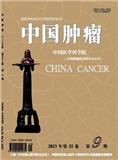
中国肿瘤
北核,CSCD,科核,武A+,高T3
CN中文-月刊影响因子4.965
-
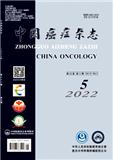
中国癌症杂志
北核,CSCD,科核,武A,高T3
CN中文-月刊影响因子2.588
-
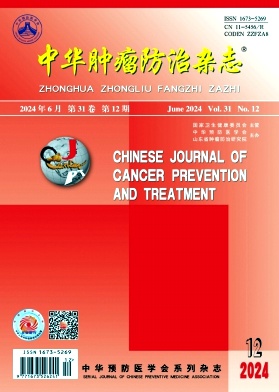
中华肿瘤防治杂志
北核,科核,武A,高T3
CN中文-半月刊影响因子1.525
-
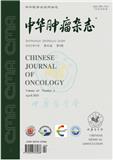
中华肿瘤杂志
北核,CSCD,科核,武A+,高T1
CN中文-月刊影响因子7.129
-
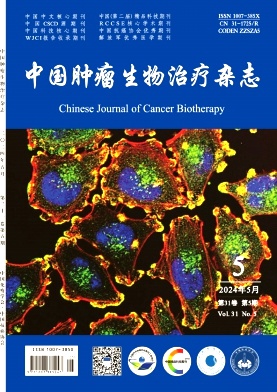
中国肿瘤生物治疗杂志
北核,科核,CSCD扩,武A,高T3
CN中文-月刊影响因子1.475
-
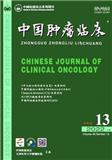
中国肿瘤临床
北核,CSCD,科核,武A,高T2
CN中文-半月刊影响因子1.82
-
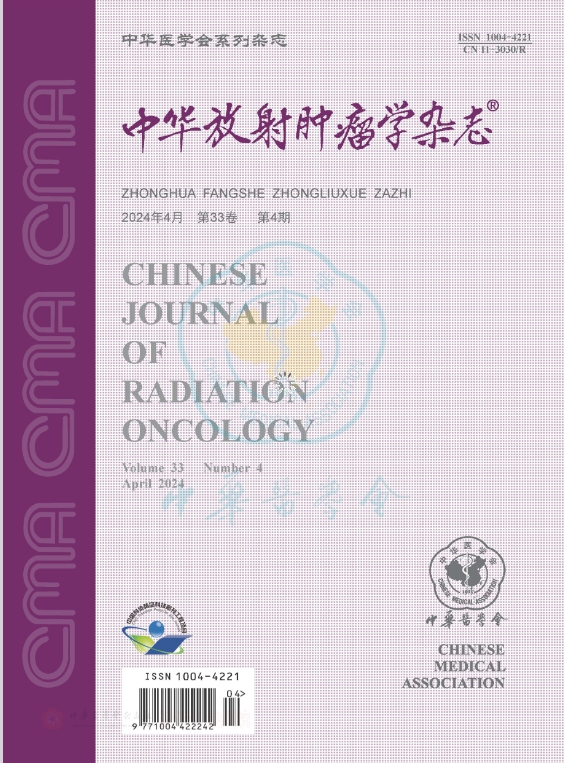
中华放射肿瘤学杂志
北核,CSCD,科核,高T3
CN中文-月刊影响因子1.159
-
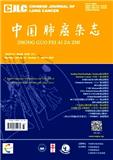
中国肺癌杂志(不收版面费审稿费)
北核,CSCD,科核,武A,高T3
CN中文-月刊影响因子2.478
常见问题
-
中国癌症研究杂志社官网、联系方式是什么?
中国癌症研究 投稿网址:http://mc03.manuscriptcentral.com/cjcr联系电话:010-88196612(202102期)
投稿邮箱:editor@cjcrcn.org(202102期) -
中国癌症研究杂志是核心期刊么?
中国癌症研究是核心期刊,级别是:CSCD,科核,高T1, 是:肿瘤学分类下的知网,万方,维普收录的期刊。
-
请问你们是中国癌症研究杂志社吗?
我们不是《中国癌症研究》杂志社。本站主要从事期刊信息展示与期刊推荐,不是任何杂志官网,直投稿件请联系杂志社。本站仅提供免费的学术指导、论文辅导、期刊投稿信息整理收集服务。
-
你们指导服务后可以保证文章被发表吗?
期刊发表的成功与否,主要取决于文章内容的质量。编辑老师会根据研究领域、创新性等多因素进行考量。我们会帮助您理解期刊的发表要求,助力提升发表几率,从而增加发表的机会。
-
晋级论文能否在报纸上发表?
在学术界,论文的发表往往被视为研究者职业发展的重要一环。晋级论文,即为了获得更高职称或学术地位而撰写的学术论文,通常需在专业期刊上发表。然而,许多人可能会问
